Are you looking for the latest in Ocean CTD Technology? Undeniably you have come to the right page, welcome to the D-2 Inc. Ocean CTD line of instruments. Finally new CTD technology for the ever change world of Oceanographic Research.
OCEAN CTD Documents
Full Product Brochure: 310-001-R3 – CTD Brochure
Data Sheet: CTD & ULP Data Sheet
Manual: 310-010 CTD Manual R3
The New D-2 Inc. Hybrid Ocean CTD
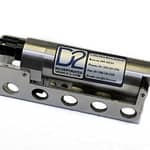
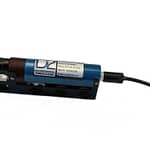
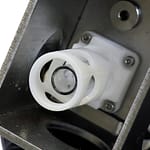
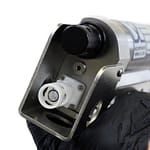
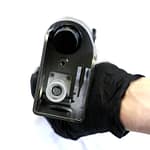
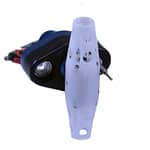
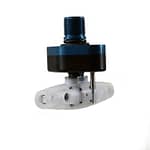

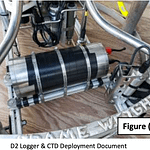
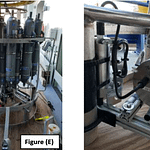
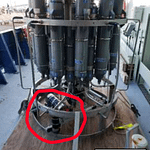
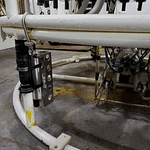

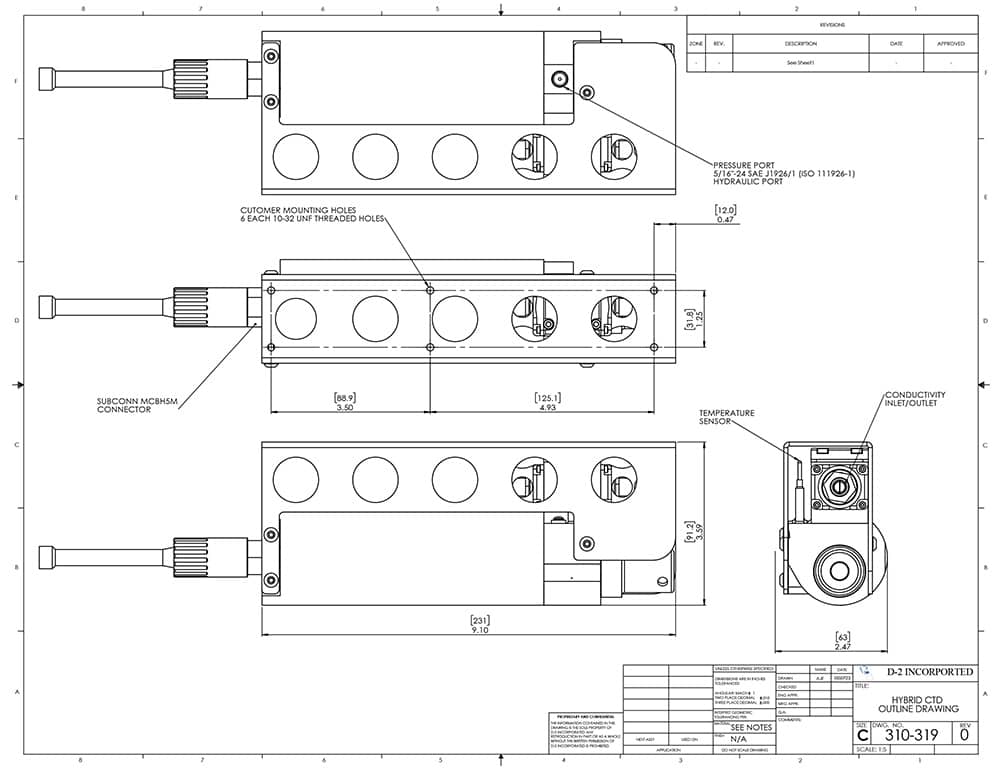
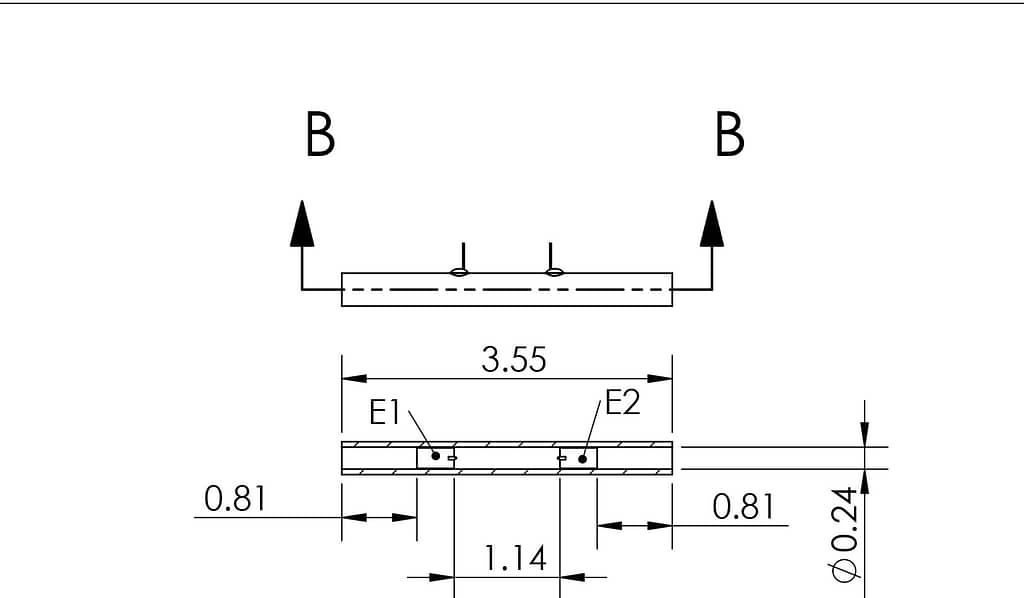
The New D-2 Closed Field Conductivity Cell Technology
Inductive versus Closed Field Cells
What makes the D2 CTD unique revolutionary technology? Not only can our CTD deliver closed field precision but also offer a flow through cell. Our Ocean CTD combines the performance advantage of the traditional 3 electrode sensor where the end electrodes are electrically tied together ensuring there is no external electric field. That electrode system couple with a novel inductive drive, eliminates the need for additional center electrode, or other electrodes in the measurement field. The two-electrode sensor with inductive drive is hence called a Hybrid as it incorporates the best aspects of both the electrode type & inductive type conductivity sensors that have a strong history of performance oceanographic conductivity measurements.
Closing the Field to Measure Accurately
As the two outside electrodes are sorted together electrically so by theory the outside potential of the sensor is “zero” hence there is no current flow outside the path sorted by the end electrodes. The inductive drive creates a current that flows through the center measurement region, the current flows in direct proportion the conductivity of sea water. This current is collected by the end electrodes and passed through a simple current to voltage transformer. As current is in direct proportion to the conductivity of sea water and the magnitude to the drive signal.
Free Flowing Precision
The drive signal level can be precisely controlled, and the collection electrodes and shorting path can be constructed to have very low impendence as compared to the external sea water path, hence the ‘all’ of the current flows through the short, and, hence the current measurement transformer. The result is a two-electrode cell that is ½ the length of a traditional a 3-electode cell and has a large center diameter. A sensor that can free pass water through the cell without the need for a pump in almost all applications. In applications where a pump is needed, say for biological control, this can be easily added as the sensor measurement volume is 100% enclosed in the sensor and the addition of tubing a pump will not affect the calibration. The sensor is fully described in US Patent #9,410,910.
EXCLUSIVE FEATURES:
The new Hybrid Ocean CTD technology offers some new features previously unavailable in the market of deep ocean conductivity sensors.
- The CTD can provide full ocean depth precision, using closed field technology to ensure only seawater in the conductivity cell is being measured.
- New Hybrid 100% Internal Field Free Flushing Conductivity Sensor.
- High Speed Sheathed Thermistor ~ TC = 60 mS (2 mm diameter) with integral Temperature Reference Standard
- Industry Standard Silicon Pressure Sensor Full Thermally Compensated
- High Speed Sampling, Programmable
- Real Time Clock with Programmable Interval Sampling as required & 128 Mbit data storage.
- Compatible with commercial wire-line telemetry packages available from third parties.
- Each Sensor Calibrated over the range of 2.6 to 6 S/cm in a computer controlled bath, using natural seawater; water sample at each point is compared to IAPSO seawater
- Depth dbar: 3000m Aluminum Housing
- Depth dbar: 7000m 17-4PH Stainless Steel Housing
- Depth dbar 11,000m Titanium Housing
Email us to be added to the list to see the CTD Models For Packing:
Product Specifications
Product Specifications:
Conductivity: Range: 0-7 S/M, Resolution: 0.00004, Initial Accuracy: +/- 0.0003 S/M, Typical Stability: +/- 0.0003
Response < 0.065 msec Free Flushed @ 100 cm/min Velocity Through Water
Temperature: Range: -5C to 35C, Resolution: 0.0002, Initial Accuracy: +/- 0.001, Typical Stability: +/- 0.0002C per Month.
Response High Speed Probe .065 sec
Response Standard Probe 0.100 Sec
Pressure: Range: User Set, Resolution: 0.001% F.S., +/- 0.015% F.S., +/- 0.02% F.S. Year.
Response < 0.015 Sec
Power Consumption: 200 mW (all sampling speed) Standard Version
50 mW (all sampling speed) ULP Version
Sampling Speed: 2 to 26 Frames of CTD/Second Standard Version
Sampling Speed: 1 or 2 Frames of CTD/Second ULP Version
Auxiliary Sensors: The unit has an 8 Channel 12 BIT A/D Range 0 – 3.3VDC A/D convertor available for Auxiliary Sensors
Consult Factory for Auxiliary Channel Input Filter Conditioning & Response
Auxiliary Sea Cable Telemetry Module:
Sea Cable: Inner conductor resistance 0 to 350 ohms?
Modem Baud Rate: Up Data UP Rate 9600 BPS
Bi Directional Serial Command Channel 300 BPS Full Duplex
Power For External Sensors : 1 Amp at 15VDC
Weight: TBD
Deck Unit: Specifications TBD.
Dimensions: 13″ x 5 x 3″ (Custom Sizes available)


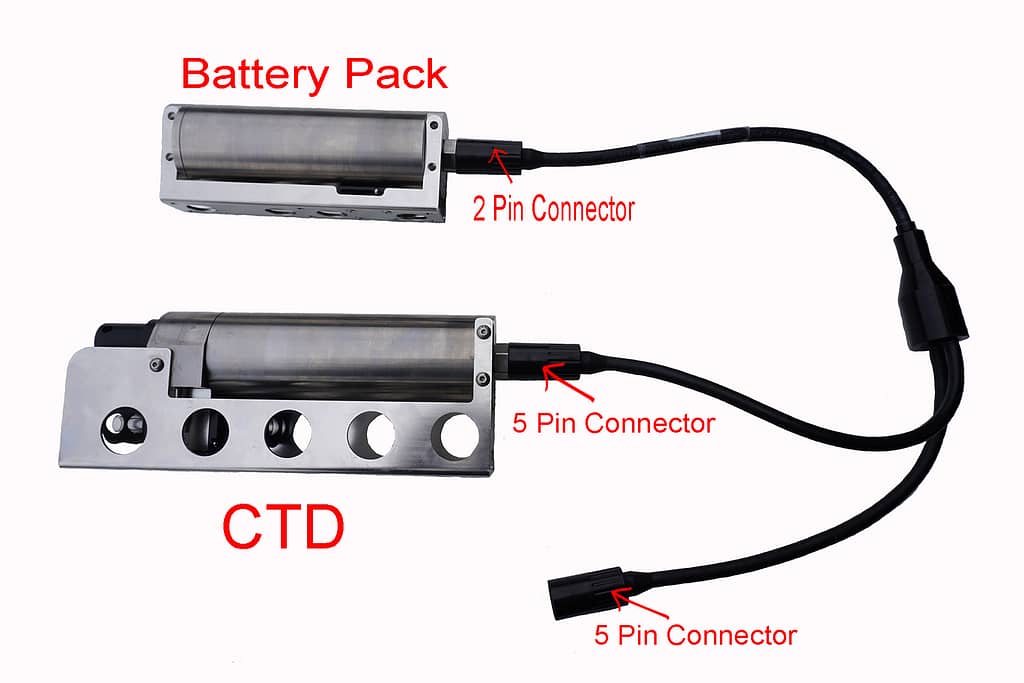
D-2 Hybrid Conductivity Sensor
The Heart of the D-2 Incorporated CTD is its novel new ‘patented’ Hybrid conductivity sensor. This sensor has all the precision advantages of a 100% internal field cell coupled with a length that is ½ that of other competing sensors. In addition, the center sensor diameter is nearly twice as large without cavities allowing the sensor to be free flushed in most applications. However, as the sensor measurement is 100% internal a pump can also be used for those customer’s requiring even higher response, or limiting biological fouling during non-measurement periods. The Hybrid conductivity sensor represents the State of the Art in Conductivity Sensor Performance.
D-2 Temperature Sensor
Sophisticated A/D acquisition electronics, ultra-stable thermistor, and state-of-the-art calibration provide the standards-level performance of an expensive AC bridge and platinum thermometer at a small fraction of the cost. The D2 CTD is unaffected by shock and vibration, temperature highly accurate and uses the same aged and thermal shock qualified thermistor as other leading instrument suppliers. The thermistor is combined with an ultra-stable resistance reference which are both mounted within the thermistor deployment sheath to ensure temperature homogeneity, this aspect is vitally important for deep ocean measures where extreme temperature precision is an absolute requirement.
The temperature sensor is available in 2 versions, a 2 mm outside diameter industry standard size, and a high speed 1 mm outside diameter best in the business response for the most demanding applications.
Data Output
Real-time CTD data is transmitted via the RS-232 or RS-485 serial interface in ASCII characters. The D2 CTD must be externally powered, data can be logged in internal SRAM memory or it can be telemetered up a wire line using commercially available wireline telemetry systems.
D-2 Depth Sensor
The D2 CTD uses a high-accuracy, high-resolution pressure sensor. The D2 CTD’s strain-gauge pressure sensor is offered in a wide range of full-scale values up to 1000 Bars. Pressure outputs are fully compensated for the effects temperature and is performed internally using state of the art numerical techniques.
OEM Custom Versions of the CTD Sensors
D-2 CTD News...

President John F. Kennedy Speech “We are Tied to the Ocean”
The President John F. Kennedy Speech Newport, Rhode Island September 14, 1962 President John F. Kennedy Speech “I really don’t know why it is that

Ocean News 10: Rogue Waves, Argo, Dark Sea Labs, Carderock
Ocean News 10: Rogue Waves, HydroThermal Vents, Argo Ocean Temp Data, Dark Sea Labs, Carderock, etc. This is Ocean News episode 10, a show designed

D-2 to Exhibit at Combined Naval Event 2025 #CNE2025
Combined Naval Event 2025 #CNE2025 D-2 Inc. will be attending and exhibiting at Combined Naval Event 2025 #CNE2025 in Farnborough, United Kingdom this May 20-22.
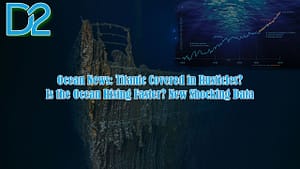
Ocean News 9: Titanic Being Eaten By Rust? Shocking NASA Data
Ocean News 9: The Titanic Being Eaten By Rust? Shocking New Sea Level Rise Data from NASA & More.. In this episode of Ocean News
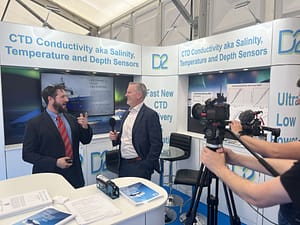
D2 Hybrid Ocean CTD Dives into Oceanographic World Interview
D2 Jumps Headlong into Oceanography with its Hybrid CTD Innovation is rampant in the subsea sector, and D2 Hybrid Ocean CTD is a perfect example,

Ocean Business 2025 News Special: Science Tech Ocean News 8
Ocean News 8: Ocean Business 2025 Special: Innovative New Oceanographic and Marine Science Tech IRL This is a special episode of Ocean News from Southampton